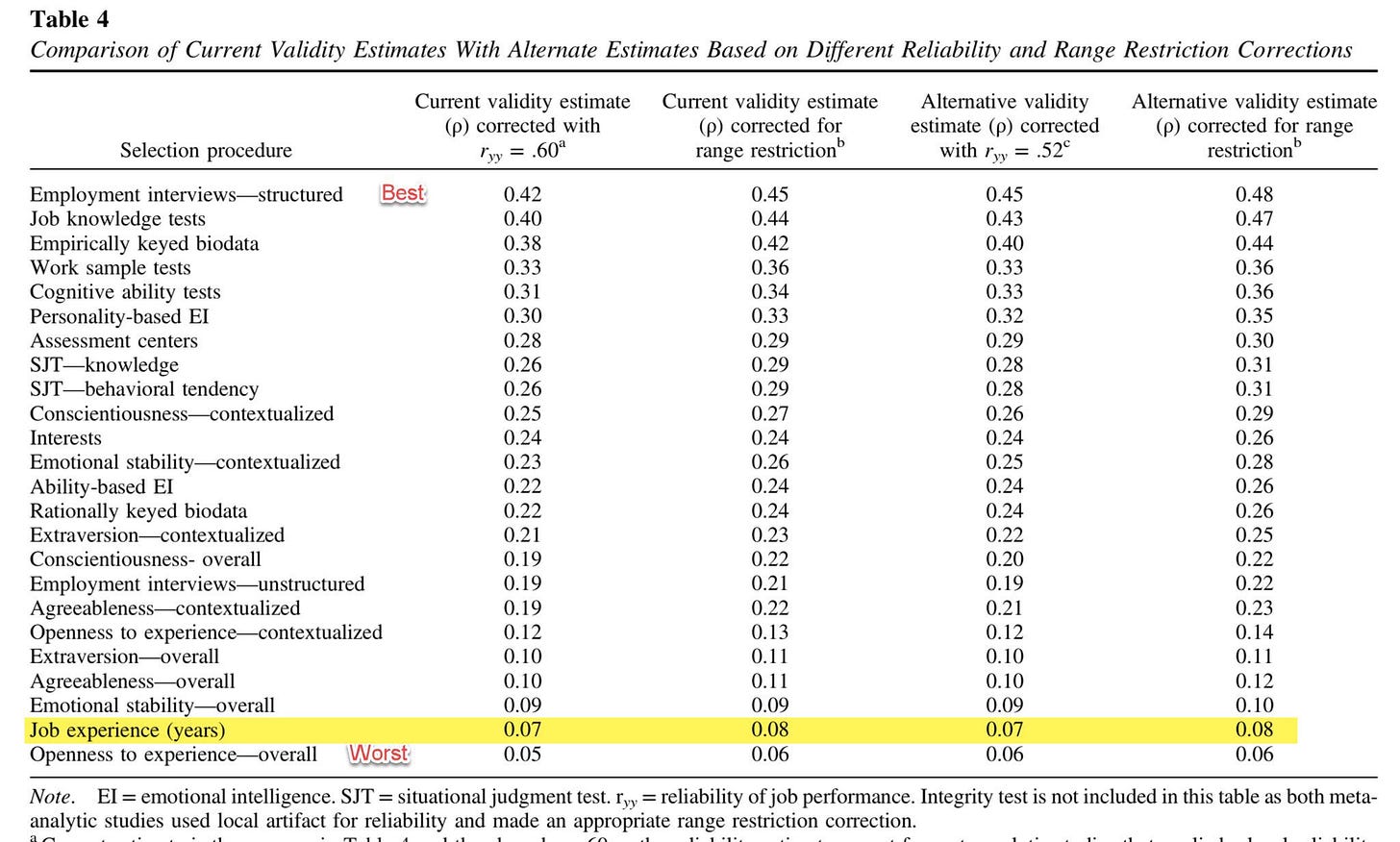HRHeadStart #53: How to Select Candidates; Work Trends
The Talent Agenda
We have noted earlier that hiring effectiveness could be measured by low False Positive and Fast Negative rates. A False Positive is when we hire someone who doesn't work out (i.e. we wrongly believed they were awesome). A False Negative is when we reject someone who would have been awesome, but we failed to spot the talent. Considering that bad hires are costly (estimated 30-100% of total cost of the employee), what selection techniques should we rely on to make good decisions?
According to this new paper, structured interviews are the most reliable way of assessing candidates. Interestingly, years of work experience is one of the worst predictors of future success for new hires.
A structured interview is a standardized method of evaluating job candidates with pre-defined questions focused on the knowledge, skills, and characteristics required for the job. Asking the same questions across all candidates, and using a standardized method for scoring responses, can ensure hiring decisions are based on job-relevant information, and not on irrelevant details. Here is a detailed step-by-step guide to mastering structured interviewing.
Working Better
Check out the star-studded and insightful conversation between Adam Grant, Simon Sinek and Brené Brown, where they talk about a wide range of topics from the world of work. You will learn about high performance, engagement, quiet quitting, managing work boundaries and so much more. Part 1 and Part 2.
Tiny Thought
What we already know determines what we will be able to learn. It takes knowledge to gain knowledge.


